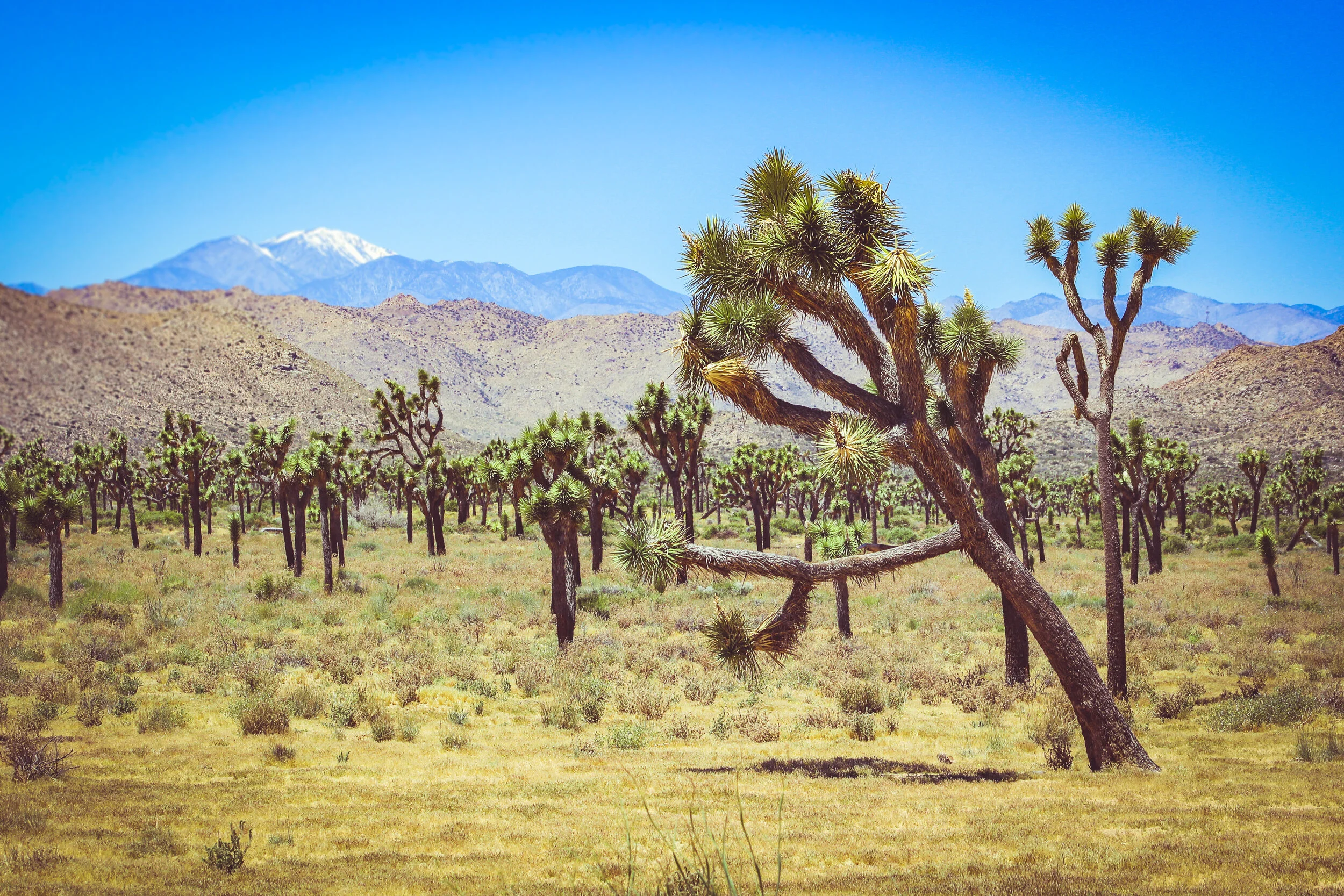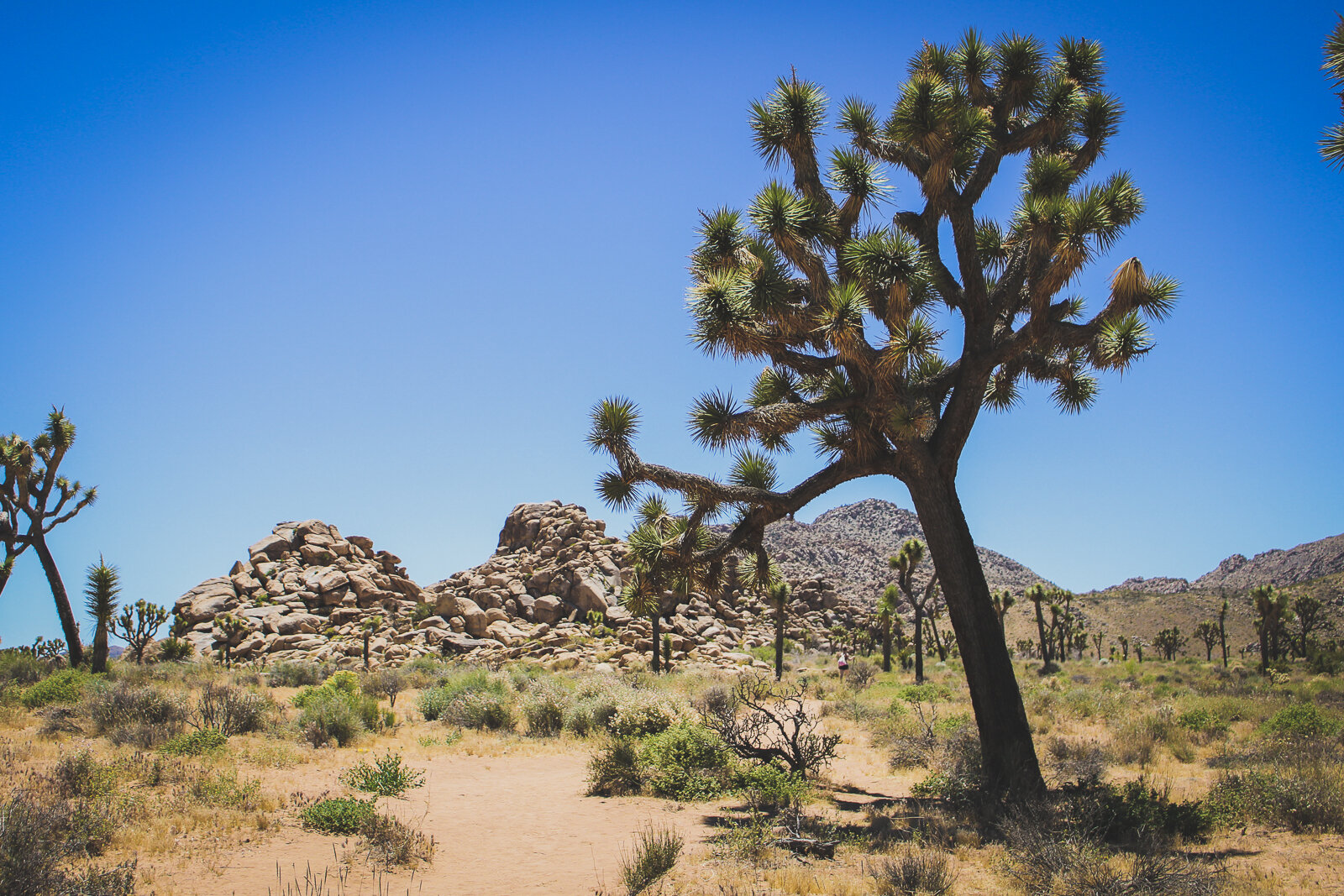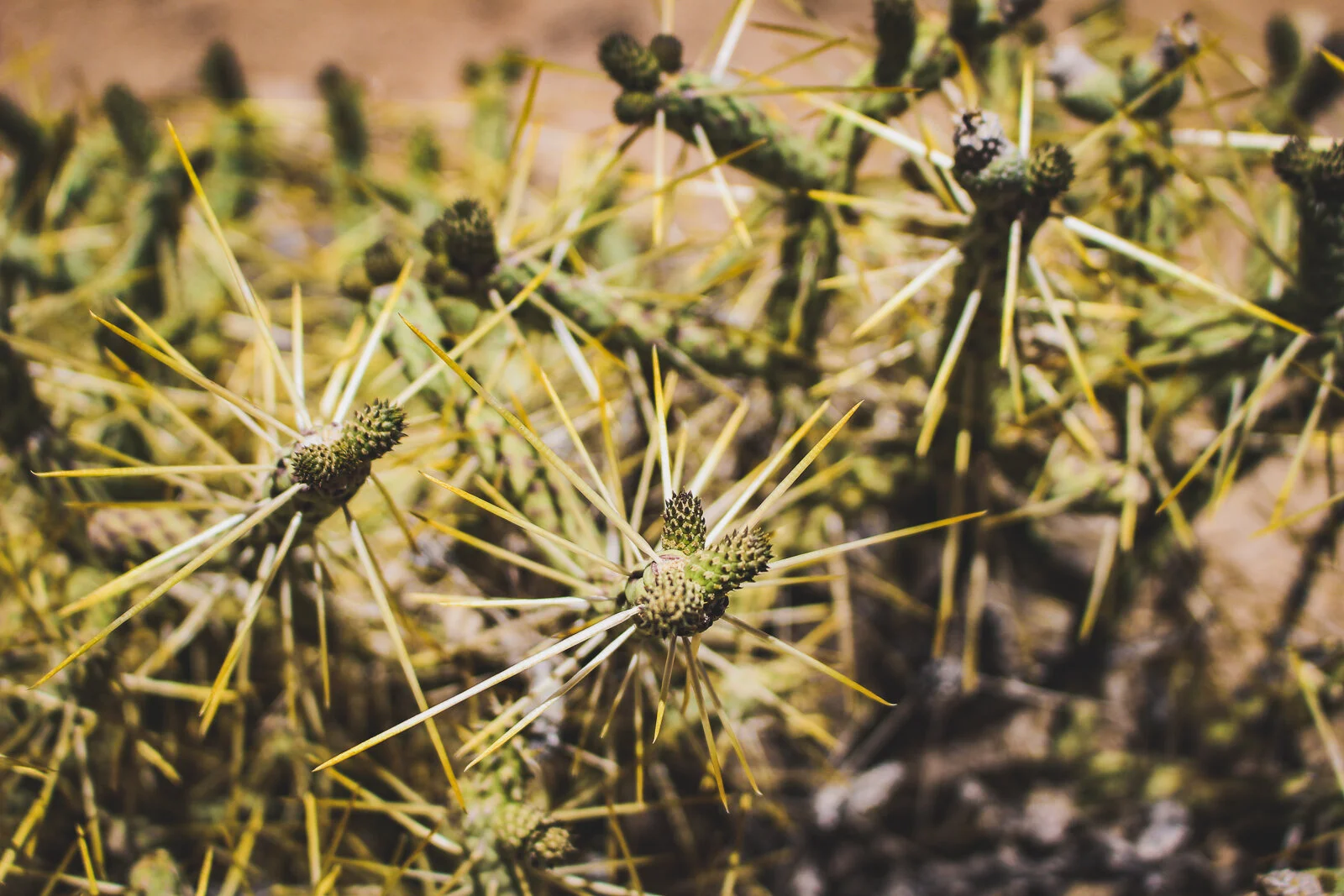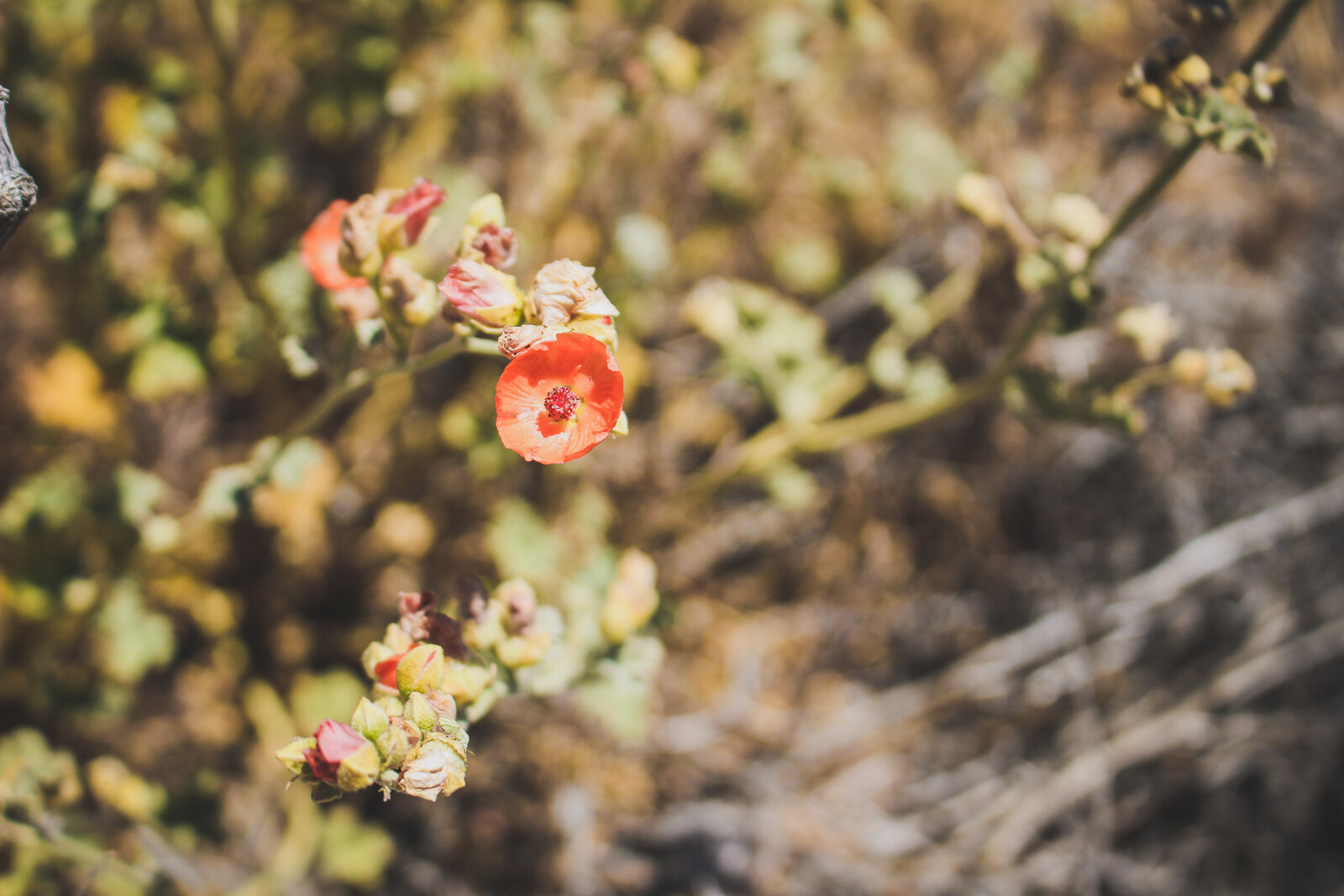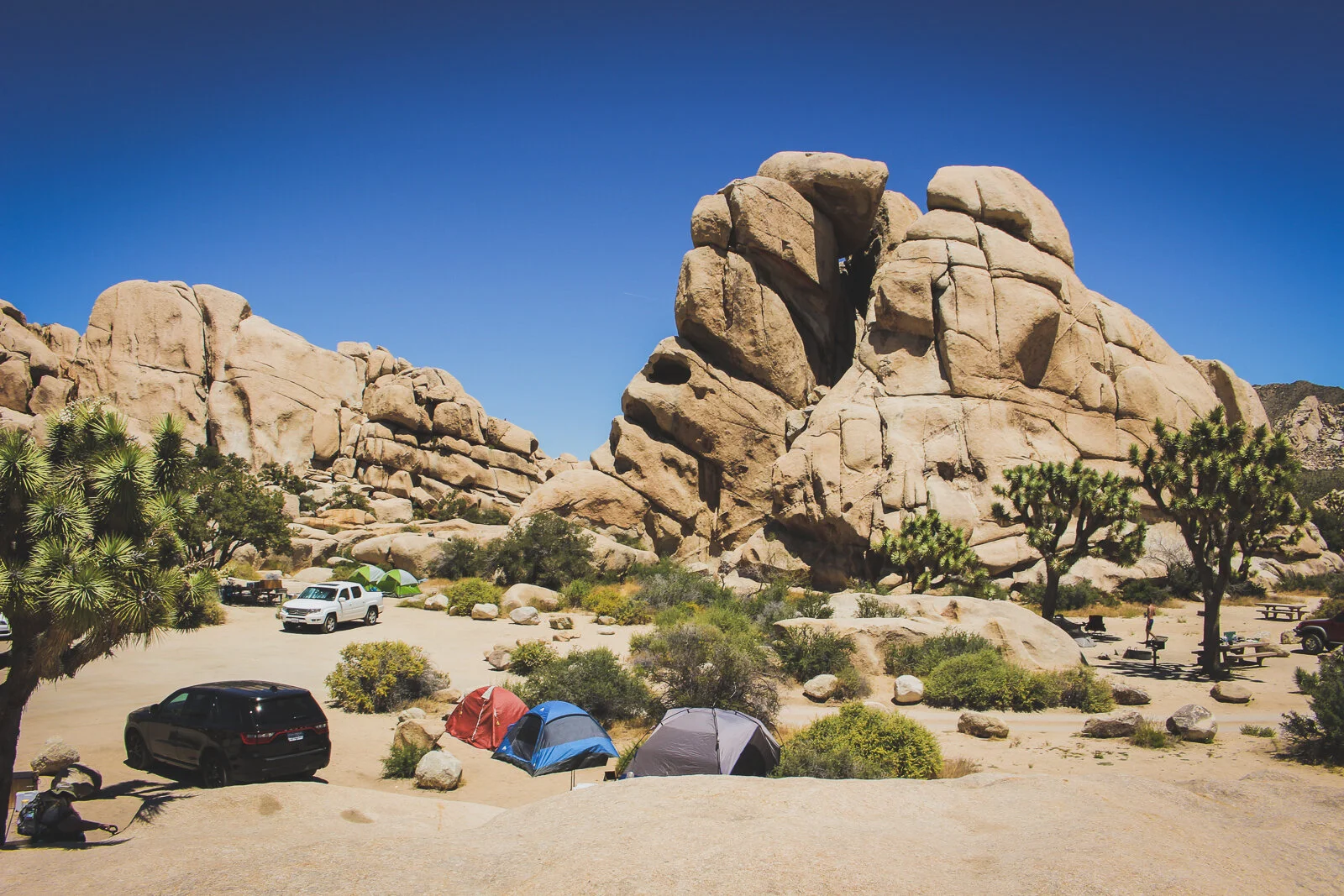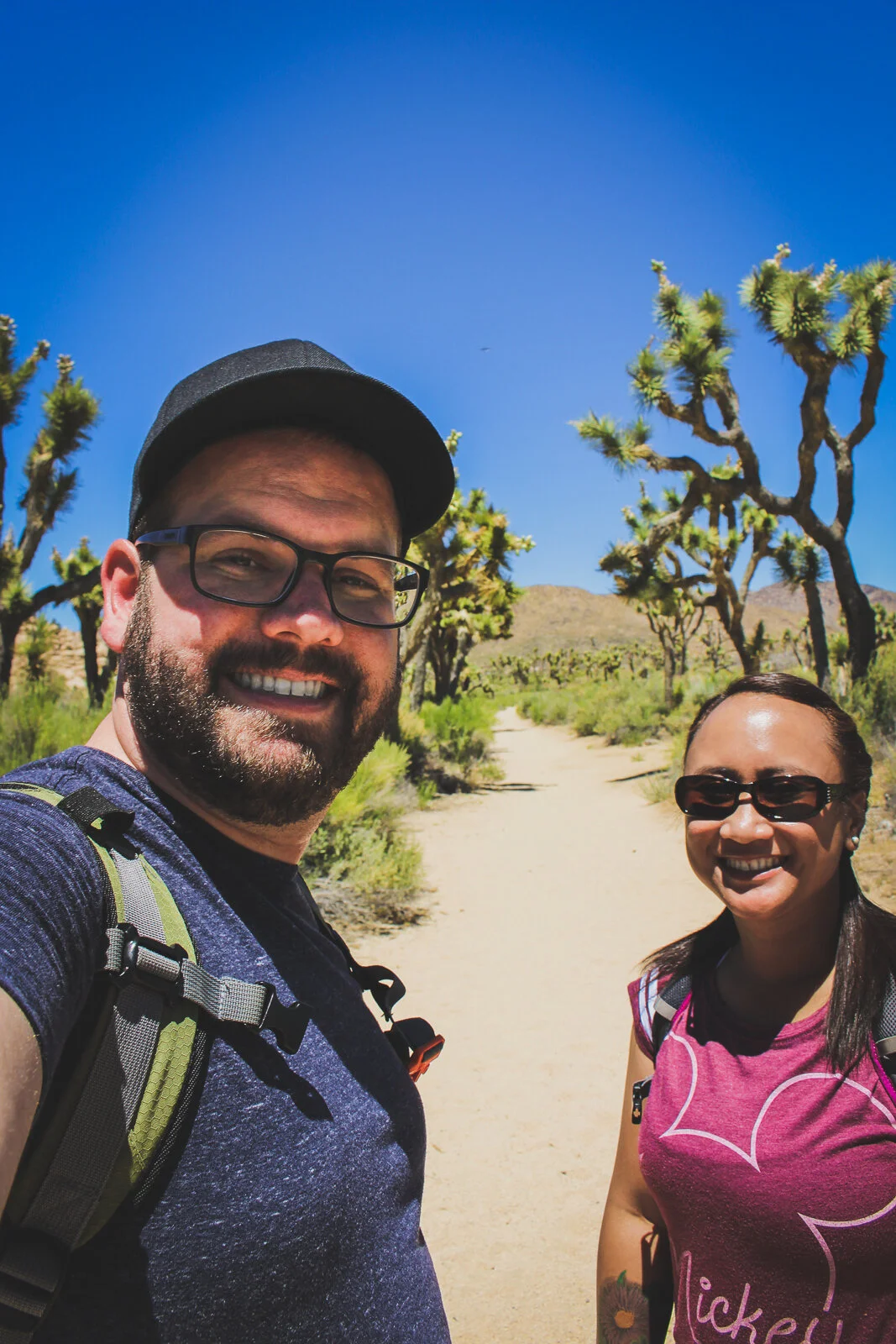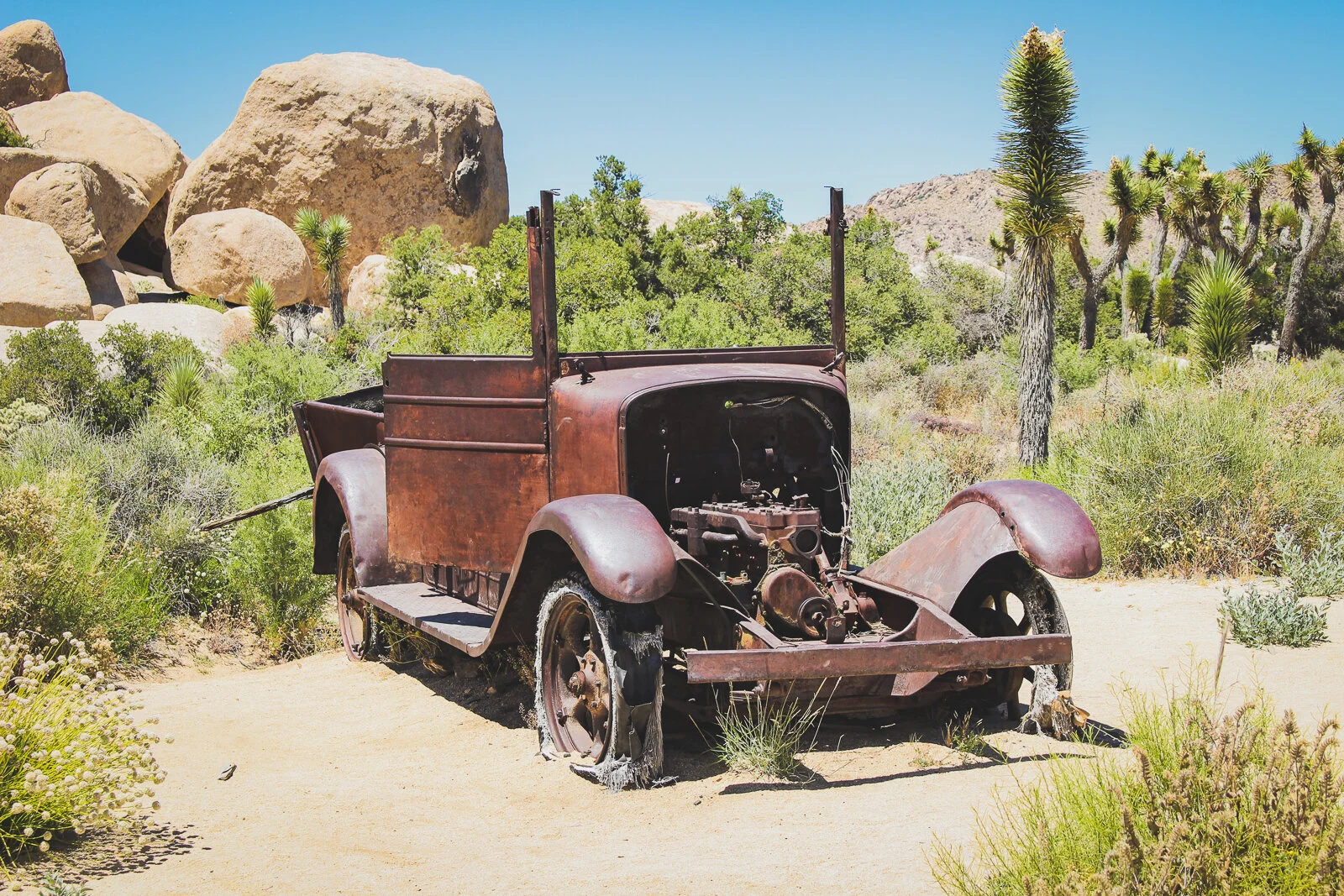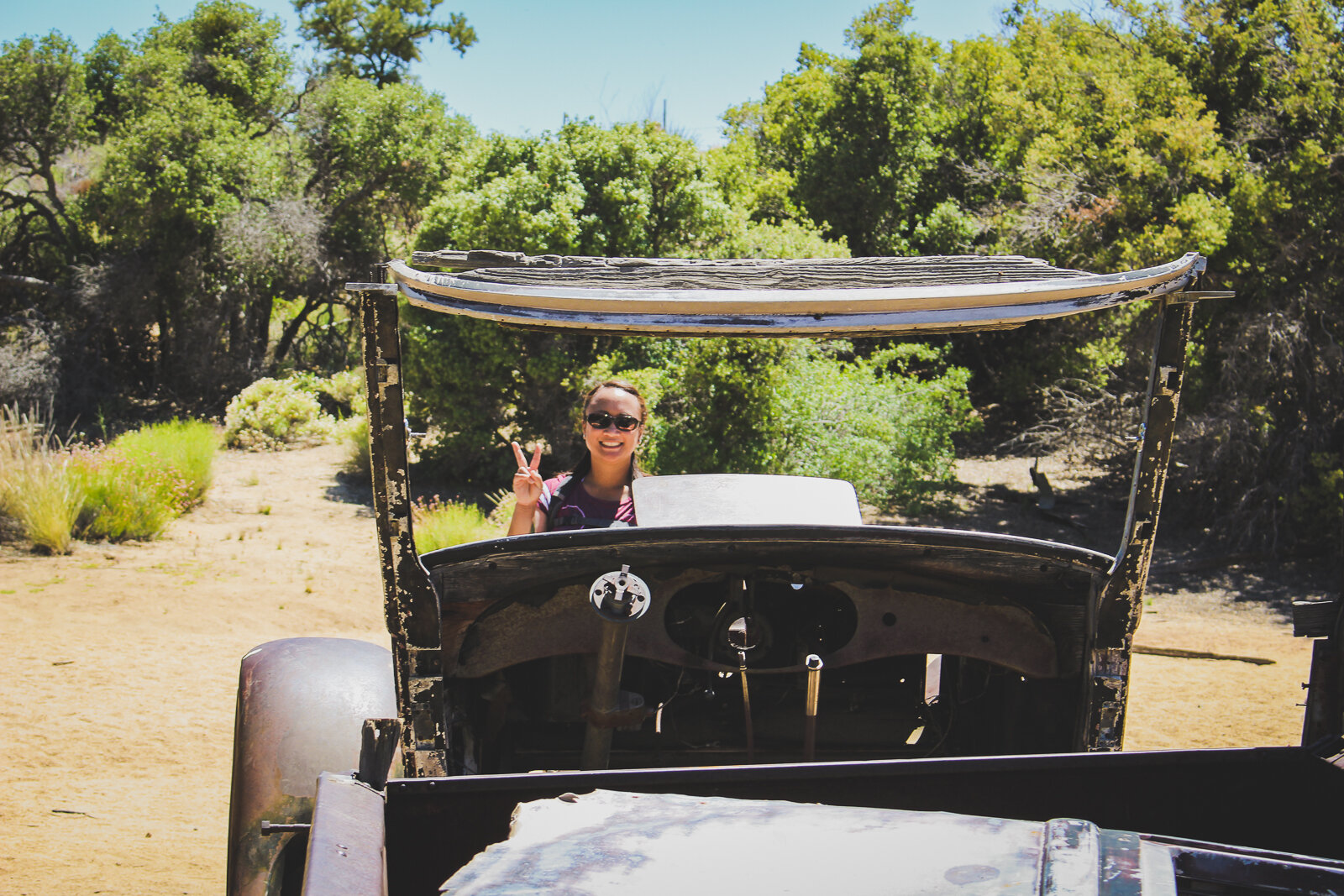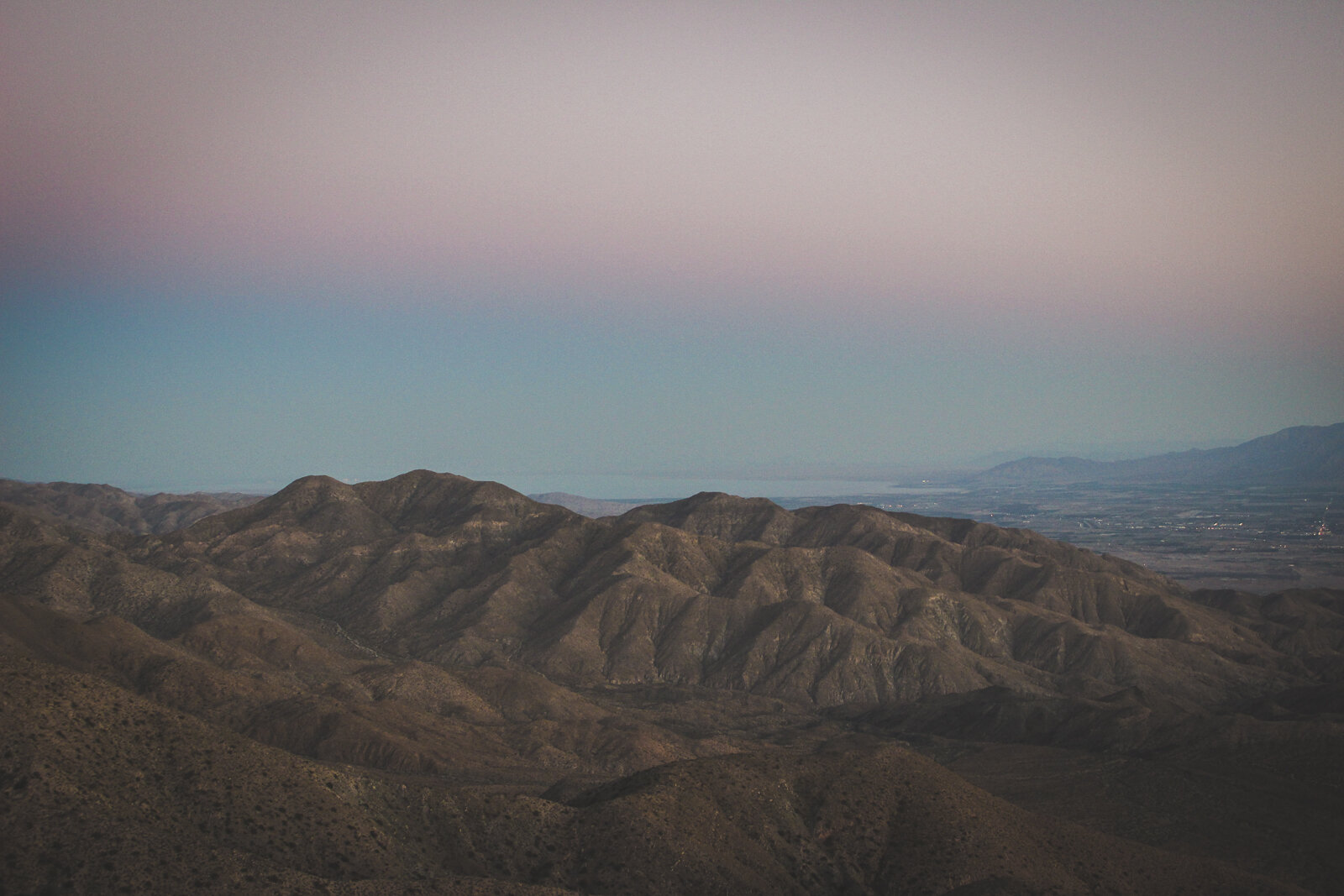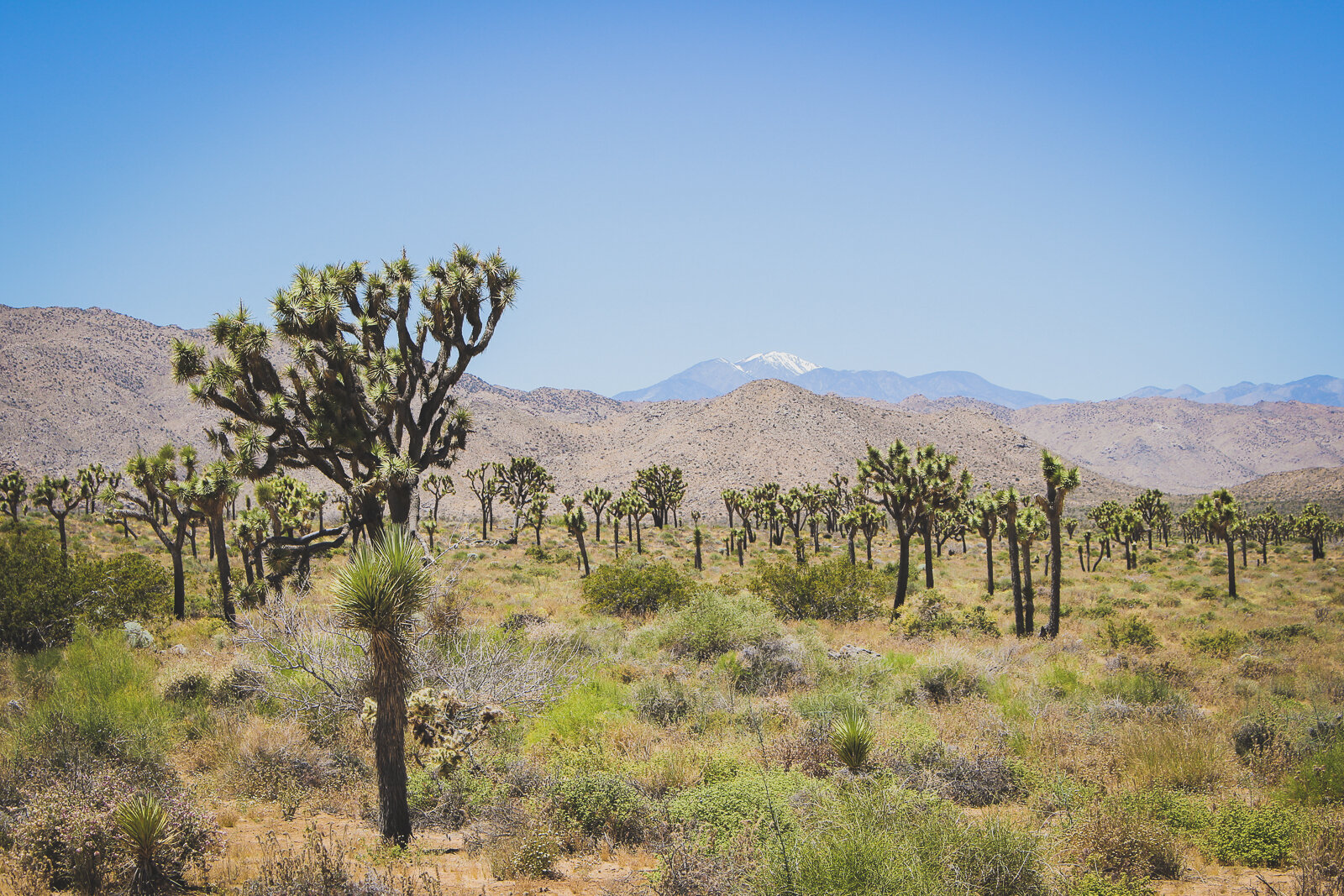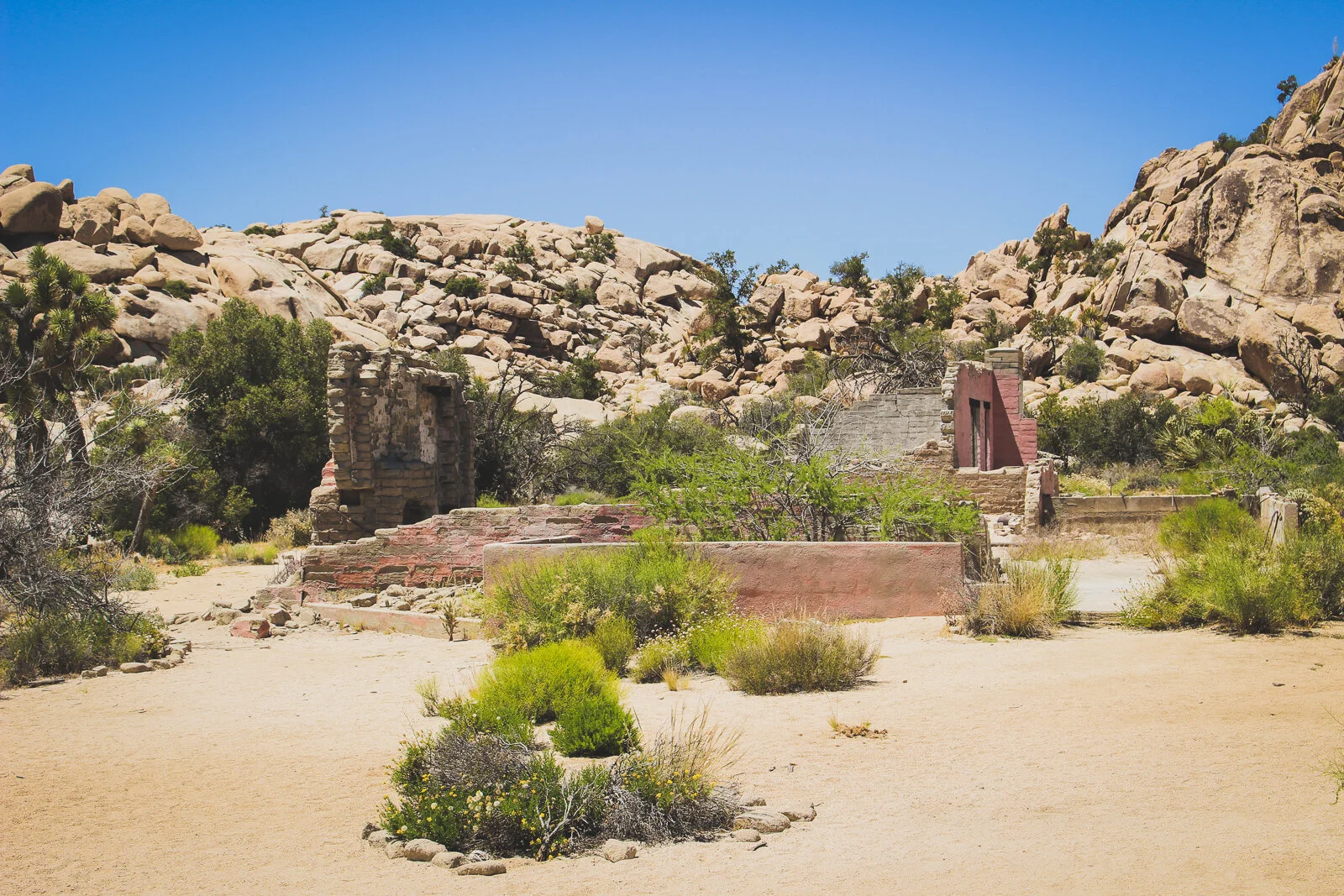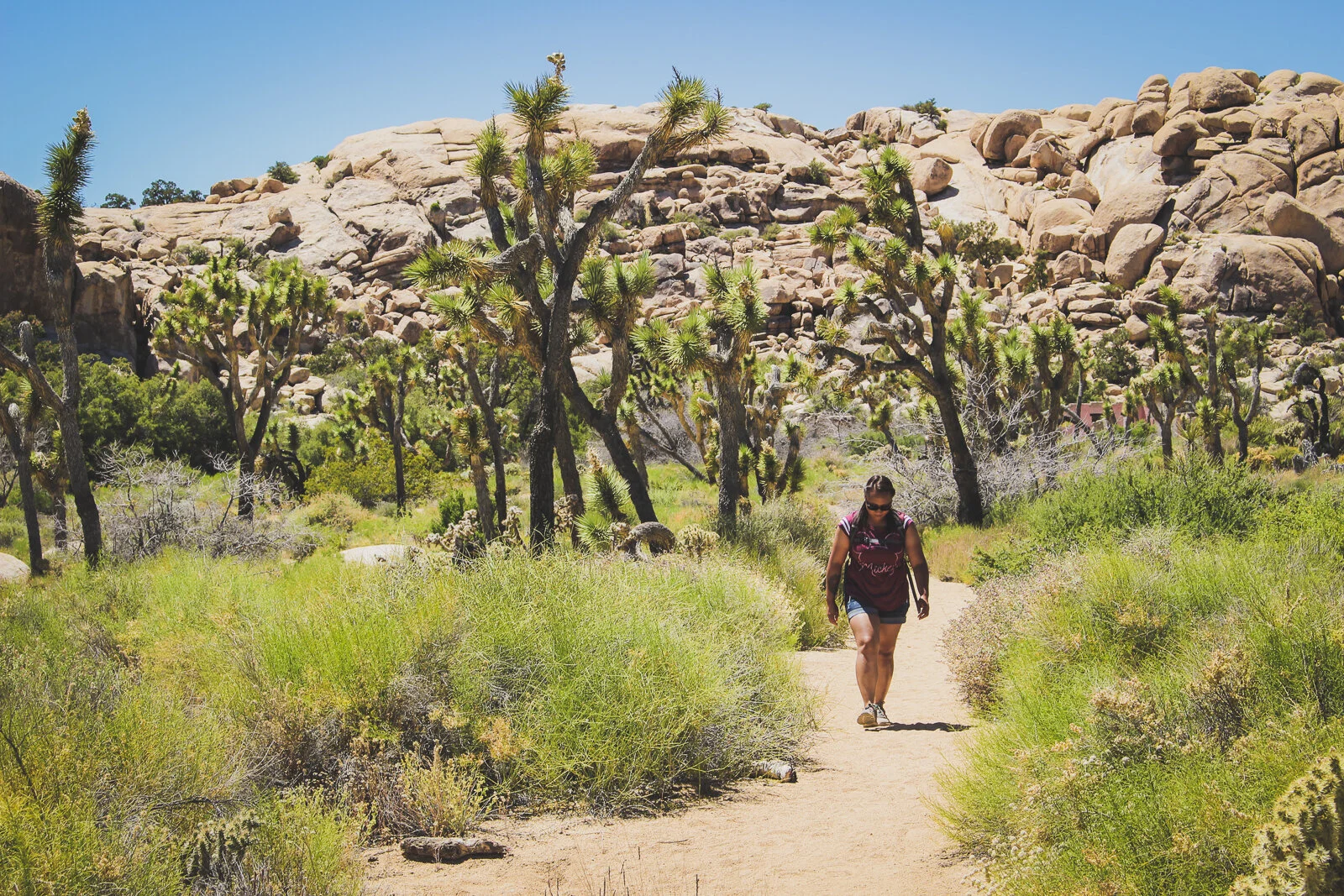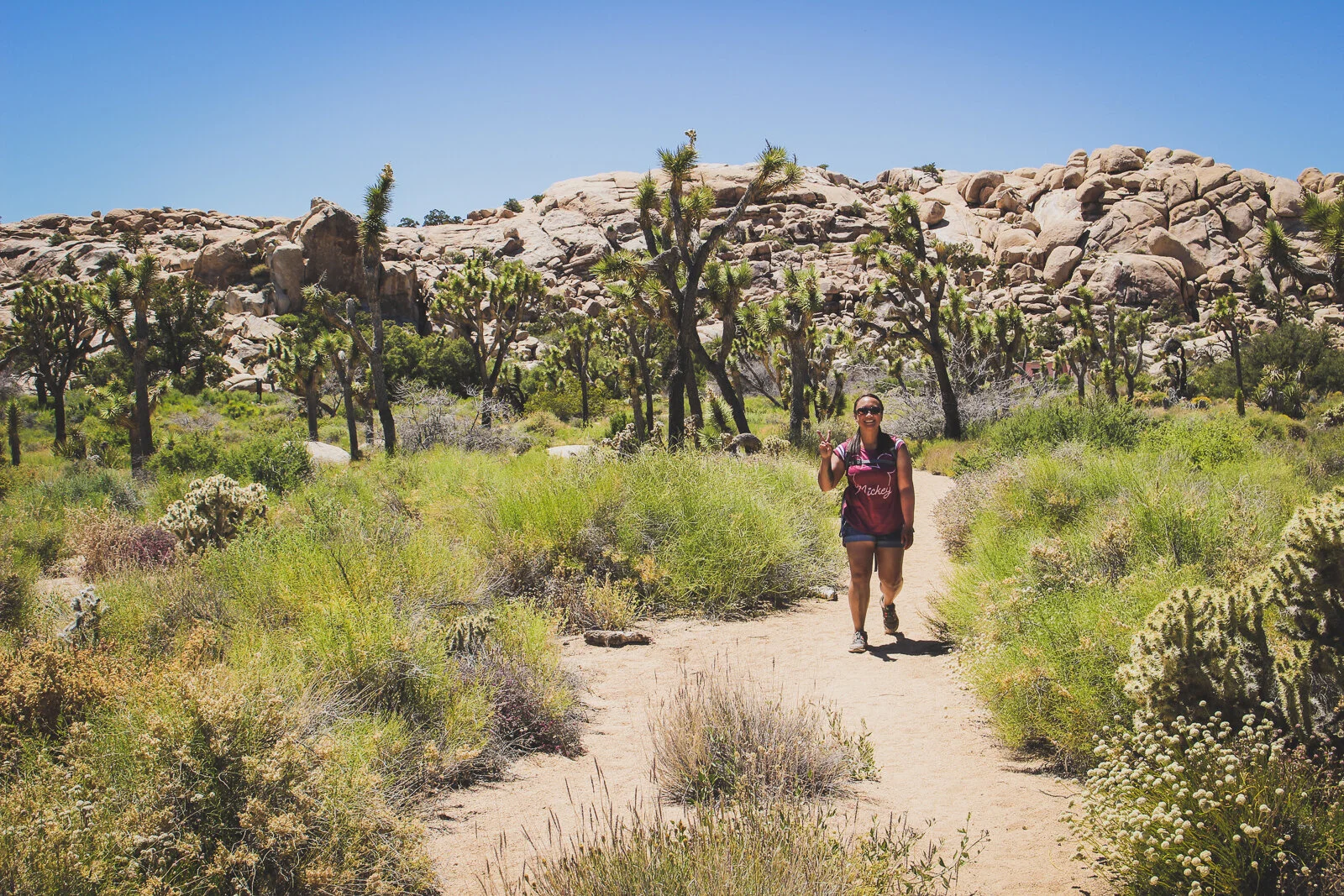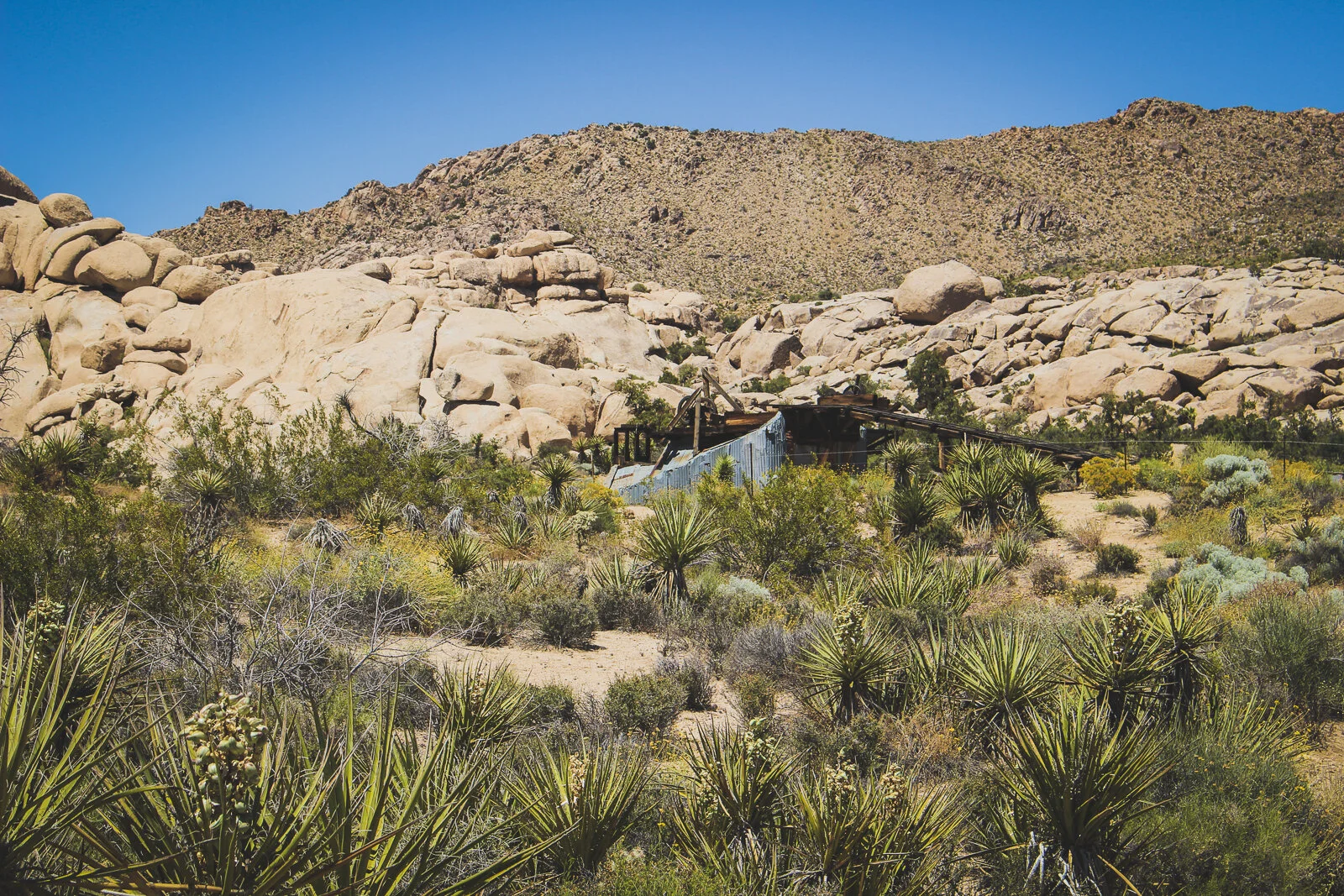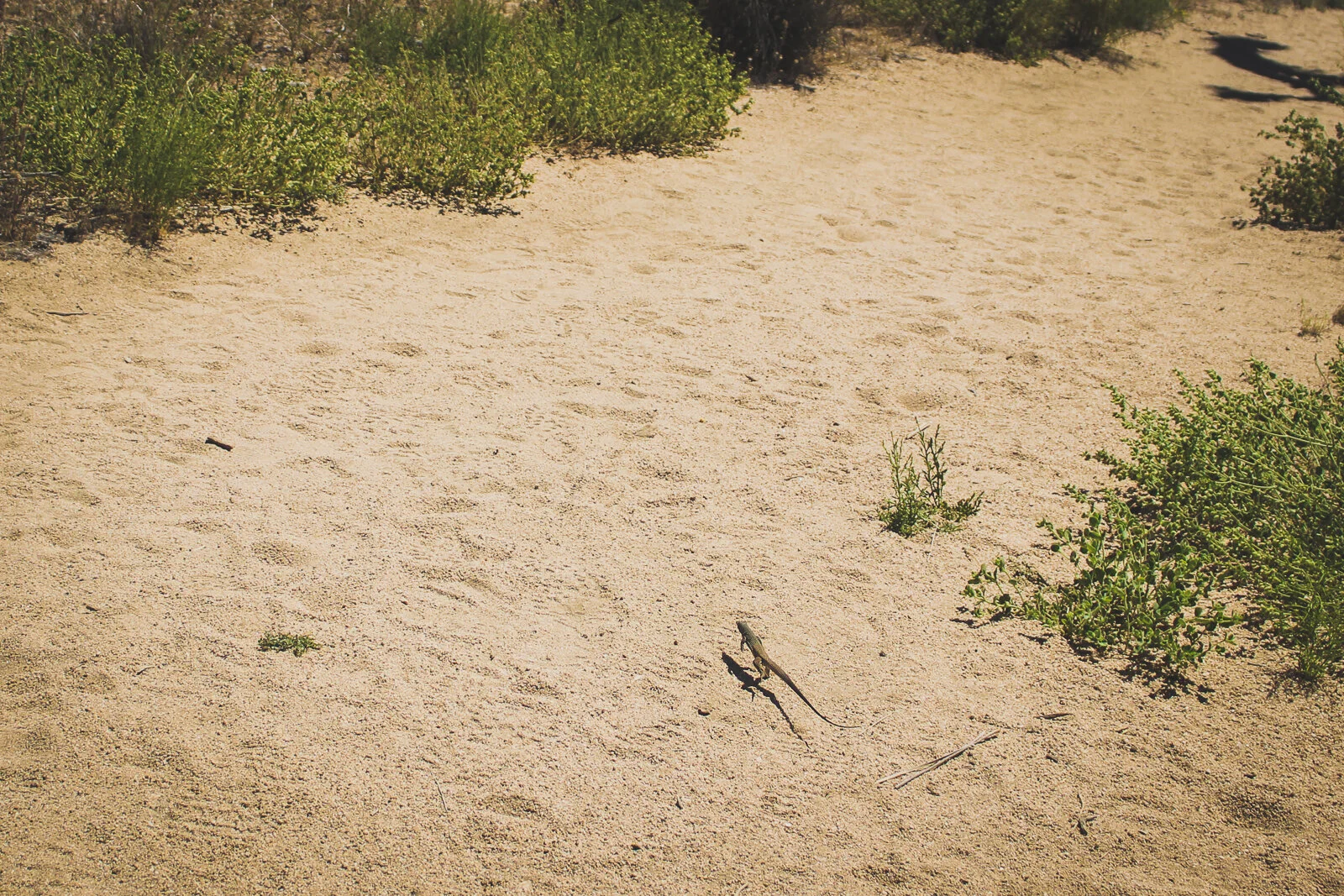Joshua Tree National Park is a different kind of wilderness. Famous for an abundance of Yucca brevifolia, better known as the spiky, outstretched Joshua tree, the park sits at a crossroads between the Mohave and Colorado deserts. Located due north of the Coachella Valley and 135 miles east of Los Angeles, the park was a relatively nearby way to get away. And so, in May of 2017, Cindy and I packed up the car and headed east.
Joshua Tree didn’t seem to be an “e-ticket” National Park. Meaning, there isn’t as many landmark historical and natural features (geologic formations, waterfalls, caves, historic monuments, etc.) as say a Yosemite or a Yellowstone. They’re there, but they play a supporting role to the landscape and the sky—a crystal clear blue during the day and the darkest night sky available near Los Angeles, by night.
Though we only had a half-day there, Cindy and I were excited to get away and explore the park. When we arrived, we drove down Park Boulevard, one of the two main roads through the area, before figuring we should pull over and start looking at stuff.
Just off our turn-out of choice, a trail stretched out towards an alien pile of rocks. We used the opportunity to go exploring and get away from the main road.
While clearly a desert, Joshua Tree is teeming with life. Against the backdrop of distant mountains, rocky formations, and the titular Joshua Tree forests was a yellow-green sea of bushes and grasses. On our springtime visit, it didn’t take a close inspection to see all sorts of wildflowers and insects enjoying the terrain.
Returning to the car, we continued down the main road, stopping at the Hidden Valley Campground to get our bearings. Nestled between impressive rocky blobs, the campground looked like tan, Martian settlement. We happened to be staying in Palm Springs, but I definitely want to come back and camp Joshua Tree.
Next, we drove north-east to the Barker Dam Nature Trailhead. The Barker Dam is a 100+ year old reservoir, constructed by the early cattlemen in the area. While the dam is a popular hiking destination on its own, Cindy and I were really interested in exploring the Wall Street Mill area. We threw some waters in our bags and took off northeast, up a sandy trail.
A short way into the hike, a small offshoot from the main trail led us to the ruins of an old house. Featuring a few rusted out vehicles, craggy foundations, barely-standing walls, and a dilapidated fireplace, the site is fascinating and sad. I tried to find some information on the ruins—apparently they once belonged to L.A. sheriff's Deputy Worth Bagley, who was shot dead in an old-west style shootout in 1943. The house was then acquired by artist Singe Ohlson and lasted until sometime in the ‘70s. Over the years, the site has been known as the Bagley-Ohlson home, Wonderland Ranch (after the adjacent Wonderland rock formation), the Pink House, or Uncle Willie’s Health Food Store. Interesting.
Anyway, we continued back to the main trail and, not long after, arrived at the Wall Street Mill.
Propped up with old timber and covered with a rusty-old corrugated metal roof and sides, the Wall Street Mill was a gold-ore processing mill built and owned by Bill Keys in the 1930s. The site features late-19th century milling machinery, not easily observed without sneaking into the fenced-off site (which we did not do). The area is littered with a few other rusted out vehicles, out-buildings, and lumber. It was fun to walk around and explore and felt far older than it really was.
Bill Keys, the miner and rancher who built the mill, seemed to be an interesting character. He was the actually the gunman who shot Worth Bagely (the deputy from the Pink House). Apparently it was Bagely who attempted to gun-down Keys in a not-so-neighborly dispute. Keys fired back on Bagely, who was hit and dropped dead. Keys then commemorated the murder with a square stone, etched with the inscription:
Here is where Worth Bagely bit the dust at the hand of W.F. Keys, May 11, 1943.
The stone was boastful and probably not the best choice—Keys was later imprisoned for the murder. But, he was eventually paroled and pardoned when the killing was deemed done in self-defense. The stone has since been removed, a casualty of vandalism.
Anyway, after fully soaking in the area, we trekked back to the car. We were already losing daylight and thought it might be fun to catch the sunset from Keys View (yes, the same Keys from earlier). We took off and drove up the ridge along the south-side of the desert basin. As we reached the road’s end, we got out and joined several other families perched along the summit rocks.
The view was spectacular. To the southeast, you could see the soft city lights of Coachella firing up after the spring day. And to the west, a painting of a sunset silhouetting rows of desert mountains. We stayed for awhile and soaked in the sun’s final rays.
As day turned to night, we wanted to take advantage of one more of the park’s features—the dark night sky.
We have a telescope and we love to stargaze, but the light pollution in the L.A. area can be severely limiting. Joshua Tree’s desert walls block out a fair chunk of that light pollution, which makes for an excellent view of the night sky. Knowing this, we drove down from Keys View and found a random turnout that was nestled away from the road. I set up the telescope and we hid from the cold in our car, waiting for night sky to bathe fully in darkness.
I don’t have the skill or equipment to take low-light or telescopic photography. But here’s a shot of Jupiter and its moons, as taken with an iPhone camera through the eye piece of our telescope. LOL.
From where we were, we didn’t achieve total darkness. You could still see the hazy-glow of the greater Los Angeles area burning over the top of the western ridge. But still, it was a great view of the night sky, with stars, planets, satellites, and airplanes swirling overhead. It was a relaxing, awesome way to finish our day at Joshua Tree—a truly wild way to leave the wilderness.
We packed up the telescope and started the car. The once busy main-road was now empty and it felt as though we had the whole park to ourselves. I treaded down the windy road, carefully and was glad I did—at one point, a pack of coyotes trotted directly across our path. Finally, we made it out of the park and rolled downhill to our Palm Springs hotel room. It was a short, great visit and I can’t wait to go back.
Well, that was all the time we spent at Joshua Tree National Park! One hike, one viewpoint, and a few random moments of sightseeing! But still, we had fun. To see more photos from our half-day there, check out the gallery below!
